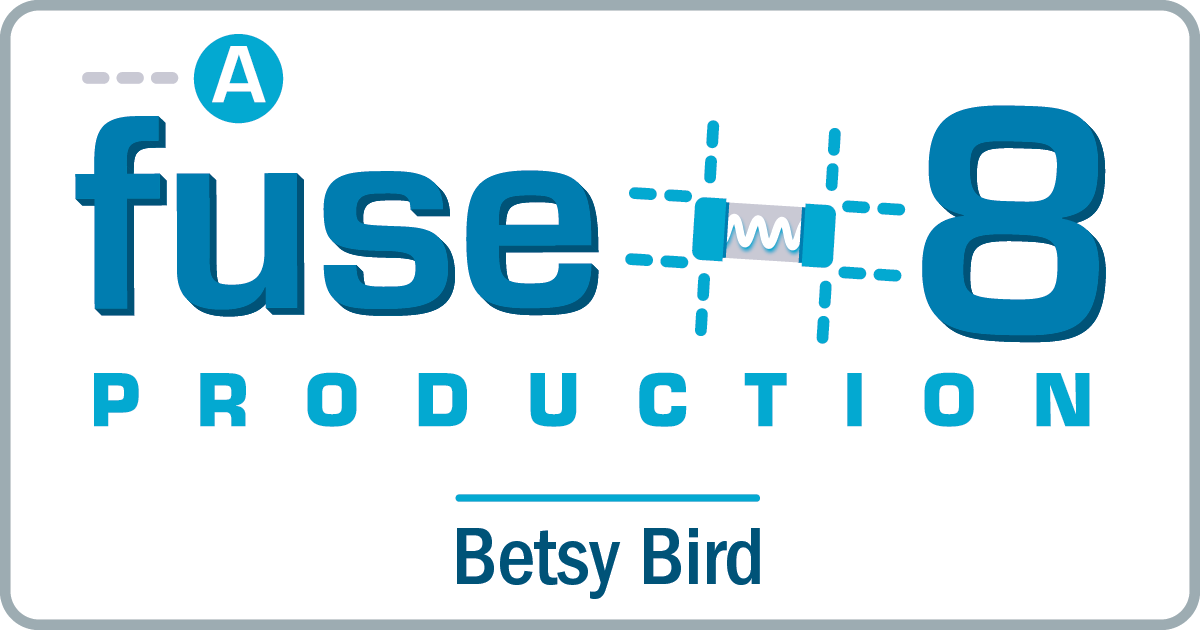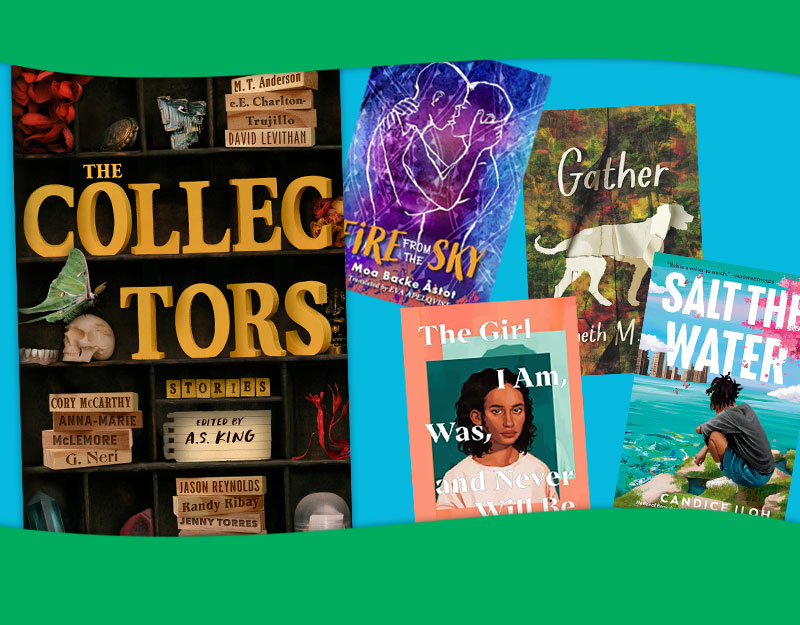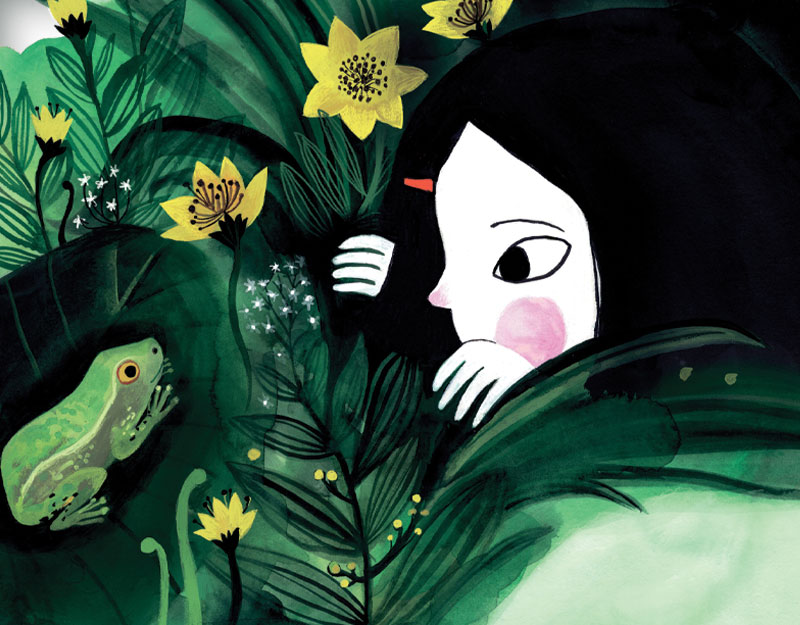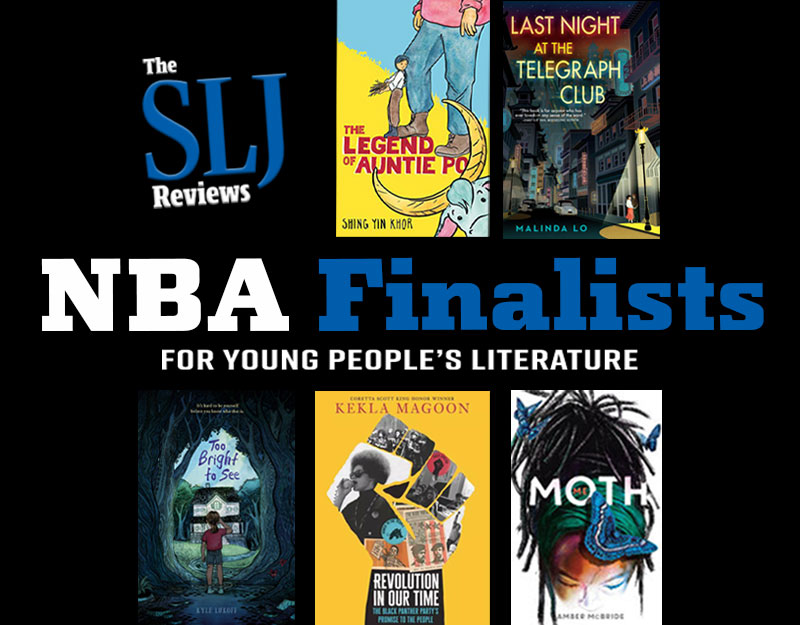A “child’s story for adults”: Digging Deep Into James Baldwin’s Only Children’s Book
The other night my husband and I plopped ourselves in front of the old Netflix delivery system (television) and decided amongst ourselves to watch the documentary I Am Not Your Negro featuring author James Baldwin. The book of the same name had been circulating beautifully in my library for quite some time, so I was curious about the doc. In many ways I’ve never explored the works of Baldwin fully. In that film I got a cursory crash course on him with a specific look at how his words carry weight today.
 This year Duke University Press is republishing Baldwin’s sole contribution to the field of children’s literature. Little Man, Little Man: A Story of Childhood originally was published by Dial back in 1976, then disappeared from view. There were a number of reasons for this. Written in black speech, the book touches on issues of drug abuse, alcohol abuse, physical abuse with language you wouldn’t usually find in an average picture book. In fact, when the book was originally released no one quite knew what to do with it. It was sold as a “child’s story for adults” and even the great Julius Lester (who died just this past January) said in his New York Times review that the book has “no storyline” and “lacks intensity and focus”. Add in the fact that the art was by French illustrator Yoran Cazac who had never seen Harlem and was a bit loosey goosey on the specifics, and you can’t be entirely surprised that it disappeared from memory.
This year Duke University Press is republishing Baldwin’s sole contribution to the field of children’s literature. Little Man, Little Man: A Story of Childhood originally was published by Dial back in 1976, then disappeared from view. There were a number of reasons for this. Written in black speech, the book touches on issues of drug abuse, alcohol abuse, physical abuse with language you wouldn’t usually find in an average picture book. In fact, when the book was originally released no one quite knew what to do with it. It was sold as a “child’s story for adults” and even the great Julius Lester (who died just this past January) said in his New York Times review that the book has “no storyline” and “lacks intensity and focus”. Add in the fact that the art was by French illustrator Yoran Cazac who had never seen Harlem and was a bit loosey goosey on the specifics, and you can’t be entirely surprised that it disappeared from memory.
ADVERTISEMENT
ADVERTISEMENT
And yet . . . well, I read it the other day. When I describe it as a “picture book” I’m being a bit facetious. Truth be told it’s better described as an early chapter book. In its newest iteration it clocks in at 98 pages with copious Forewords and Backmatter to explain its role in history. In the new edition you’ll find the initial Foreword by Tejan Karefa-Smart, Baldwin’s nephew and the kid who made it all happen by bugging his uncle to write a book about him. Though he lived in France at the time, Baldwin complied, even naming the hero of the book TJ. Next comes an Introduction by editors Nicholas Boggs and Jennifer DeVere Brody, placing the book both in the context of its times and where it stands today. The Afterword belongs to Aisha Karefa-Smart, Baldwin’s niece and, arguably, another character in the book.
 Lester was correct in declaring that the book isn’t exactly plot forward, as they say. Reading it I had the distinct impression that it felt like nothing so much as that recent film The Florida Project. Kids running wild. Adults trying to get by. But it has a leg up on that film in that you’re getting everything through Baldwin’s keen insights and distinctive voice. And it really is a beautiful read. The descriptions alone are worth the price of admission. Consider this part where TJ is describing his neighbor, the slightly older girl Blinky. “Blinky, she a funny color. Her color changing all the time. She always make TJ think of the color of the sun-light when your eyes closed and the sun inside your eyes. When your eyes is open, she the color of real black coffee, early in the morning.” I could spend all day just parsing those sentences apart, reconstituting them, watching them fall, and reading them over and over.
Lester was correct in declaring that the book isn’t exactly plot forward, as they say. Reading it I had the distinct impression that it felt like nothing so much as that recent film The Florida Project. Kids running wild. Adults trying to get by. But it has a leg up on that film in that you’re getting everything through Baldwin’s keen insights and distinctive voice. And it really is a beautiful read. The descriptions alone are worth the price of admission. Consider this part where TJ is describing his neighbor, the slightly older girl Blinky. “Blinky, she a funny color. Her color changing all the time. She always make TJ think of the color of the sun-light when your eyes closed and the sun inside your eyes. When your eyes is open, she the color of real black coffee, early in the morning.” I could spend all day just parsing those sentences apart, reconstituting them, watching them fall, and reading them over and over.
A beautiful read, sure, but is it for kids or adults? Duke University Press is declaring this to be the first time in their history that they’ve published a work for children. But as I mentioned before, the book has (capital C) Content. Sorta. Actually, as I read the book the only thing that really caught me off-guard was the repeated use of the word “ass” (which, let’s be honest, James and the Giant Peach and Peter Pan also contain). Adults reading the book will undoubtedly get a lot more out of what’s not being said in the grown-up world surrounding the kids than actual child readers would. The one thing that makes me pause before recommending it for youth collections is the fact that the writing is mature and compelling for adult audiences alone. In one sequence TJ imagines his block as it would appear in a movie where a criminal was trying to escape the cops. He indulges in a long back and forth description of what that scene would look like, coming straight out of TJ’s head as he walks his route. It’s brilliant but along with other moments in the book, Little Man, Little Man feels more like an illustrated short story than a book with a young audience in mind.
 Baldwin chose French abstract artist Yoran Cazac to illustrate his work. In their Introduction, Boggs and Brody try to make Baldwin’s choice in this matter clear. They talk about a moment when his mentor, Beauford Delaney, told him to look and then look again at the gutters before him. In that murky water, Baldwin saw the reflection of the buildings. This, they say, is how he wanted Cazac to illustrate his book. Since Cazac had never been to the U.S., his was a purer vision. Baldwin gave him sources like The Black Book (1974) to work off of for his art, but that was it. It was good of the editors to mention this as there are two illustrations in the book that will particularly rankle New York readers. The shots of Harlem streets are consistently odd. Cazac never really quite figured out what a brownstone is, so more than once the art takes on a distinctly French look. He is at his best, unsurprisingly, when he is at his most abstract. Near the end of the book the children are in the home of a couple where something poisonous is brewing between them. Suddenly the art starts to divide itself into panels, but the panels reflect the emotions in the air rather than the action on the ground. It’s amazing work.
Baldwin chose French abstract artist Yoran Cazac to illustrate his work. In their Introduction, Boggs and Brody try to make Baldwin’s choice in this matter clear. They talk about a moment when his mentor, Beauford Delaney, told him to look and then look again at the gutters before him. In that murky water, Baldwin saw the reflection of the buildings. This, they say, is how he wanted Cazac to illustrate his book. Since Cazac had never been to the U.S., his was a purer vision. Baldwin gave him sources like The Black Book (1974) to work off of for his art, but that was it. It was good of the editors to mention this as there are two illustrations in the book that will particularly rankle New York readers. The shots of Harlem streets are consistently odd. Cazac never really quite figured out what a brownstone is, so more than once the art takes on a distinctly French look. He is at his best, unsurprisingly, when he is at his most abstract. Near the end of the book the children are in the home of a couple where something poisonous is brewing between them. Suddenly the art starts to divide itself into panels, but the panels reflect the emotions in the air rather than the action on the ground. It’s amazing work.
At the beginning of the book the editors discuss the “canon of twentieth-century African American children’s literature” starting with the magazine The Brownie’s Book and continuing through the children’s books of Langston Hughes, Julius Lester, Faith Ringgold, and Toni Morrison. I found their choices telling. In each case they have chosen to highlight an artist that worked primarily in the realm of adult literature or art, who picked up work for children on the side. No Pinkneys or Dillons or Steptoes in sight. This speaks very much to my own personal prejudice against adult authors that write for kids on occasion. Too often you’ll see a writer for adults slumming it in the children’s literature realm. Like celebrity picture book authors, they cash in their name recognition for sales. Some of them approach the enterprise seriously, while others just look like they’re trying to make a quick buck. In a way, the fact that Baldwin only did one book, ostensibly for kids, speaks well of him. His was not traveling the normal route.
 In a December article in PW called James Baldwin’s Sole Children’s Book Comes Back into Print, NYU professor Nicholas Boggs speaks to the way in which American is finally ready for this book. “The book is written in black English, which Baldwin celebrated, both as an art form and as a form of politics”. Indeed in the Introduction, Boggs and Brody cite Baldwin’s essay “If Black English Isn’t a Language, Then Tell Me What Is?” In it he says that language “is a political instrument, means and proof of power . . . and the most vivid and crucial key to identity.” That, combined with the tough subject matter, means that Boggs truly believes the time is right for this book now. “In an era of Black Lives Matter, readers are ready to think about how children inevitably confront challenging social issues, but it’s not all doom and gloom. Instead, the book gives children a playful way to recognize and navigate obstacles in their lives.”
In a December article in PW called James Baldwin’s Sole Children’s Book Comes Back into Print, NYU professor Nicholas Boggs speaks to the way in which American is finally ready for this book. “The book is written in black English, which Baldwin celebrated, both as an art form and as a form of politics”. Indeed in the Introduction, Boggs and Brody cite Baldwin’s essay “If Black English Isn’t a Language, Then Tell Me What Is?” In it he says that language “is a political instrument, means and proof of power . . . and the most vivid and crucial key to identity.” That, combined with the tough subject matter, means that Boggs truly believes the time is right for this book now. “In an era of Black Lives Matter, readers are ready to think about how children inevitably confront challenging social issues, but it’s not all doom and gloom. Instead, the book gives children a playful way to recognize and navigate obstacles in their lives.”
I took a look at how Baker & Taylor has cataloged this book (due on shelves August 24th) and sure as shooting they’re giving it the designation of “children’s”. I’ve said that it feels like an adult short story, but to be frank I have no issue with this cataloging decision. The more I look at it, read it, pick it up and consider it, the more I think that maybe this is the book that kids need today. After all, with the exception of a single “jive”, the book has aged amazingly well. Someday, I’d love to see it reprinted with a different artist. Imagine what a Kadir Nelson or Christian Robinson or an Ekua Holmes could do with it. More than just a historical eccentricity, the book is certainly for adults, but I wouldn’t keep it out of the hands of kids by any means. For the right reader at the right time in their lives, this book could be a godsend. A new classic. Looks like the world finally caught up with it at last.
Filed under: Reviews
About Betsy Bird
Betsy Bird is currently the Collection Development Manager of the Evanston Public Library system and a former Materials Specialist for New York Public Library. She has served on Newbery, written for Horn Book, and has done other lovely little things that she'd love to tell you about but that she's sure you'd find more interesting to hear of in person. Her opinions are her own and do not reflect those of EPL, SLJ, or any of the other acronyms you might be able to name. Follow her on Twitter: @fuseeight.
ADVERTISEMENT
ADVERTISEMENT
SLJ Blog Network
The Moral Dilemma of THE MONSTER AT THE END OF THIS BOOK
Winnie-The-Pooh | Review
Parsing Religion in Public Schools
ADVERTISEMENT








I HAVE always loved this book. In an age of Jason Reynolds, Jacqueline Woodson, Mahogany L. Browne, et. al., I believe YA readers will and can handle this important book, written by a past-master of prose. www,leebennetthopkins.com
Hi! Hopefully this isn’t too creepy but I saw your review on amazon of a book called The Riverman by Aaron Starmer and it PERFECTLY captured everything I felt about the book! I was like, “yes!! This person gets it too!!” I’ve read books 1 and 2 in the trilogy but havent read the 3rd and I am contemplating buying the set.
Anyway, I saw the link to your blog in your profile and was just wondering if you have a bookstagram? (a page on instagram where you post pictures of books you’ve read and reviews and talk all things books with fellow bookworms!) I didn’t see an instagram link on your blog but if you have one or end up creating one, my account is @bonnie.reads.books
I’d love to follow you and read more of your reviews! Hope you have a great day and happy reading!
Thanks, Bonnie. I do have an Instagram page but it’s not really a Bookstagram one. I use Goodreads for updates on what I’m reading. Feel free to seek me out and follow me there!